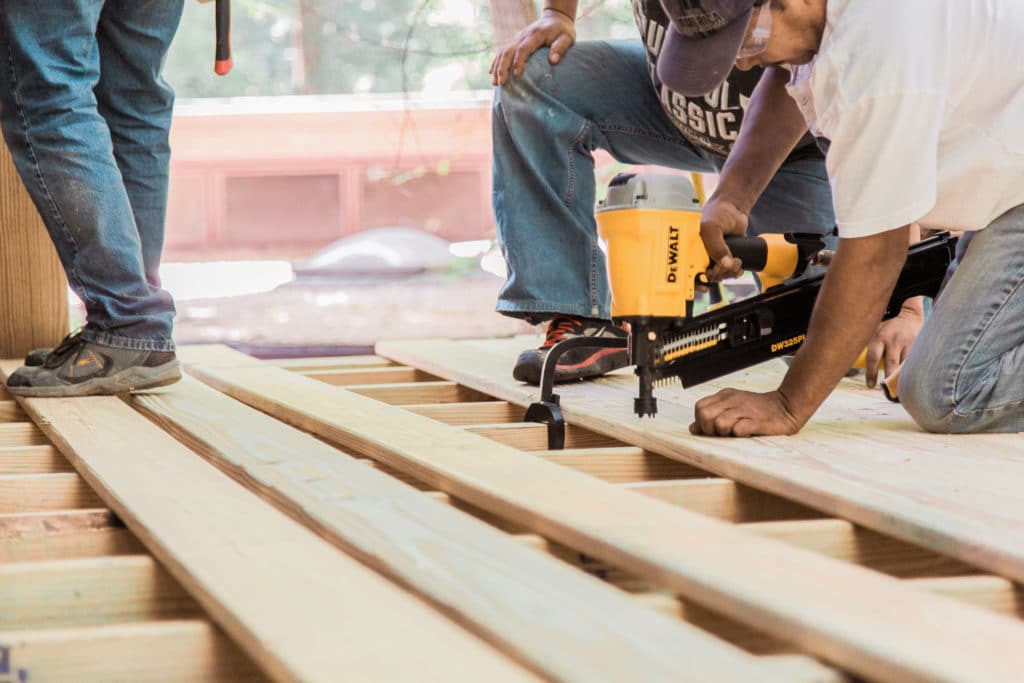“The problem is not manufacturing the product, it is the supply chain. The problem is getting the product from the warehouse, to the trucks, to the end-user, I tell my clients: your custom windows are there. I just can’t get them here.” – John Anglis, owner CareFree Home Pros, a home improvement company based in suburban Connecticut.

When Covid first hit the United States in March 2020, and the world ground to a halt, a group of enterprise-level home improvement professionals came together and created the Prevail webinar series to figure out how the remodeling industry could navigate the crisis. They shared valuable insider information with like-minded professionals. The result? Their segment of the home improvement industry not only prevailed but thrived.
Two years later, the remodeling industry faces a different set of critical issues. Rising inflation, labor shortages, material shortages, price increases, and a growing backlog of sold contracts that have not yet been installed — as well as a looming recession — are some of the dilemmas creating a sluggish supply chain.
Once again, enterprise-level business leaders have united to offer their expertise to fellow professionals, and how the smart use of technology can improve your game. Here are some of their recommendations.
Use Technology to Update Your Inventory and Pricing in Real-Time
Patrick Fingles is the owner of Nu Look Home Design, a home improvement company that specializes in roofing and exterior modeling. “Adding a piece of technology will not help your business in any way, shape, or form if you don’t utilize that technology to overcome challenges,” says Fingles. “What are your biggest challenges? That answer is the solution.”
Fingles shares the Nu Look Home Design strategy:
- Understand what inventory is available vs. not — The app does not allow salespeople to put unavailable inventory on the contract, so they can’t sell products that have been discontinued.
- Update your team in real time — Keep your organization transparent by limiting your salespeople to estimating actual inventory and prices.
- Give your team the tools to be successful — Any delays, price increases, and shortages can be updated to those in the field, allowing them to communicate clearly with the customer, mitigating the likelihood of error.
- Do not rely on “he said, she said” — Use real-time digital contracts. Insert a clause that states there are potential material delays and supply issues, and estimate the wait time. Have the homeowner initial it so there are no misunderstandings. Log all communications with your customers, including phone calls and emails.
- Understand customer amnesia — Customers invariably forget how long the wait time is. Be proactive: keep your clients up to date. Inform your customers of the status of their order with friendly reminders and emails instead of having them contact you.
- Do you have too many customers? Increase your prices. Charge more for your products. Cut off small tickets. Keep core staff busy and fed with quality jobs. Do not stop marketing or shrink your service areas.

How Does Your Home Improvement Company Fit into the Industry?
Pam Torrey is the Director of Marketing for Ingage, cloud-based software that allows your team to close more deals by using visuals during the sales presentation. She is a new homeowner herself who needs to make large purchasing decisions for the first time. She offers three key steps to help your salespeople educate homeowners about delays and disruptions.
- State of the Industry — Whatever type of remodeler you are, help your customers understand how your business fits into the industry itself. Why is that kitchen remodel going to take 16 weeks? Help your customer understand that yes, things are complicated, but your company is a trusted member of the community that can navigate a complex supply chain.
- What does the supply chain look like? Use visuals. Many people don’t recall written content. They understand pictures and the impact of a video. In the sales presentation, show what the actual timeline and supply chain looks like. People remember empty shelves of toilet paper and shipping containers stacked high at the ports.
- Keep up to date — Make sure your customer can point at an item and say, “I want that,” and your sales rep can immediately write up the contract. Constantly update your sales presentation so that you never quote incorrect pricing, and your customer does not see colors and items that are not in stock.
Be Honest About Wait Times
John Anglis is straight up about supply chain issues and weaves them into the conversation organically when speaking to homeowners, person to person. “Why should you wait for our product and our solution? A lot of my customers are having the same stress and pressure in their own jobs and understand there are problems with the supply chain. There is a science about how to mention backlogs. We have raised our prices seven times in the past year and doubled our revenue while being transparent. We remind the customer that if they wait to place an order, inflation will drive the price up.”
Inflation in the Construction Industry Exceeds that of the General Economy
According to the U.S Bureau of Labor Statistics, in the period from May 2021 to May 2022, the Consumer Price Index for All Urban Consumers increased 8.6 percent, the largest 12-month increase since December 1981. Inflation for construction goods and services is considerably higher, roughly three times greater than what it is in the general economy. Rising inflation means contractors must pay more for labor to install the products they sell and need to raise their prices accordingly or risk losing profits.
“Economists named inflation the ‘cruelest tax’ because it comes along and takes all the benefits of your hard work without you even realizing it has been taken,” says Mischa Fischer, Chief Economist at Angi. “Raise your prices. Then raise them even more. Make sure you get the price right. If you set prices correctly, it becomes pure profit. If you don’t, it becomes pure loss.”
A 360-Degree Solution
Improveit 360 is customer relationship management (CRM) technology designed to streamline your home improvement operations and boost your business. It provides powerful tools for lead and customer management, appointment scheduling, sale and project management, and reporting. Improveit 360 has been helping you, your team, and your customers stay connected since 1999. Learn More.


